 Your new post is loading...
 Your new post is loading...
Even though many people feel that success is all about whom you know, success is almost always based on what you know. That's why so many people want to learn faster, retain more information, and improve their memories.
And that's why most successful people are constant learners; that's how they stay successful.
So if you want to improve your ability to learn, here's an approach you should try: Instead of blocking (focusing on one subject, one task, or one skill during a learning session) learn or practice several subjects or skills in succession.
The process is called interleaving: Studying related concepts or skills in parallel. And it turns out interleaving is a much more effective way to train your brain (and your motor skills.) Learn more / En savoir plus / Mehr erfahren: https://www.scoop.it/t/21st-century-learning-and-teaching/?&tag=Learning+2+Learn https://www.scoop.it/t/21st-century-learning-and-teaching/?&tag=learning+faster
Via Gust MEES, Lynnette Van Dyke
Schools nowadays are required to learn faster than ever before in order to deal effectively with the growing pressures of a rapidly changing environment. Many schools however, look much the same today as they did a generation ago, and too many teachers are not developing the pedagogies and practices required to meet the diverse needs of 21st-century learners.
In response, a growing body of scholars, educators and policy makers around the world is making the case that schools should be re-conceptualised as “learning organisations” that can react more quickly to changing external environments, embrace innovations in internal organisation, and ultimately improve student outcomes. Despite strong support for and the intuitive appeal of the school as a learning organisation, relatively little progress has been made in advancing the concept, either in research or practice. This lack of progress partly stems from a lack of clarity or common understanding of the school as learning organisation. Learn more / En savoir plus / Mehr erfahren: https://gustmees.wordpress.com/2014/03/29/practice-learning-to-learn/ https://gustmees.wordpress.com/2015/07/19/learning-path-for-professional-21st-century-learning-by-ict-practice/ http://www.scoop.it/t/21st-century-learning-and-teaching/?&tag=modern-education
Via Edumorfosis, Lisa Marie Blaschke, Gust MEES
Teacher professional learning is of increasing interest as one way to support the increasingly complex skills students need to learn in preparation for further education and work in the 21st century. Sophisticated forms of teaching are needed to develop student competencies such as deep mastery of challenging content, critical thinking, complex problem-solving, effective communication and collaboration, and self-direction. In turn, effective professional development (PD) is needed to help teachers learn and refine the pedagogies required to teach these skills. However, research has shown that many PD initiatives appear ineffective in supporting changes in teacher practices and student learning. Accordingly, we set out to discover the features of effective PD. This paper reviews 35 methodologically rigorous studies that have demonstrated a positive link between teacher professional development, teaching practices, and student outcomes. We identify the features of these approaches and offer rich descriptions of these models to inform those seeking to understand the nature of the initiatives. Learn more / En savoir plus / Mehr erfahren: https://gustmees.wordpress.com/?s=coaching https://gustmees.wordpress.com/?s=professional+development
Via Gust MEES
The Feynman Technique is perfect for learning a new idea, understanding an existing idea better, remembering an idea, or studying for a test. The Feynman Technique is a mental model that was coined by Nobel-prize winning physicist Richard Feynman. Known as the "Great Explainer," Feynman was revered for his ability to clearly illustrate dense topics… Learn more / En savoir plus / Mehr erfahren: http://www.scoop.it/t/21st-century-learning-and-teaching/?&tag=Radical+Pedagogy
Via Gust MEES
Mastery learning is the idea that students should adequately comprehend a given concept before being expected to understand a more advanced one. This idea has a long tradition in educational theory and research. In 1919, superintendent Carleton W. Washburne in Winnetka, Illinois, showed that students could advance at their own pace if they mastered a concept before moving on to something more complicated. Years later, building on Washburne’s work, educational psychologist Benjamin Bloom coined the term “mastery learning.” In 1984, in Bloom’s seminal study, “The 2 Sigma Problem,” he showed that mastery-based one-on-one tutoring is two standard deviations more effective than conventional instruction. (That means it would take the average for a cohort of students from the 50th percentile to the 98th percentile!). Ever since, educators have sought ways to make mastery learning available to all students. Learn more / En savoir plus / Mehr erfahren: http://www.scoop.it/t/21st-century-learning-and-teaching/?tag=modern-education http://www.scoop.it/t/21st-century-learning-and-teaching/?tag=Learning+by+doing http://www.scoop.it/t/21st-century-learning-and-teaching/?tag=Practice
Via Gust MEES
Critical Thinking and Students
Designing instruction that fosters critical thinking skills is a necessary part of our instructional process. We must make sure to proactively differentiate the learning to guide our students through a variety of levels of understanding.
Bloom’s Taxonomy has stood the test of time to empower our own thinking and reflective practices. Specifically the revised taxonomy and questioning techniques continue to guide teachers to evolve with the times to support learning through carefully designing and meaningful active learning for everyone.
Check out Literacy is Not Enough to think about applying the important skills of problem solving, creativity, collaboration, analytical thinking, ethics, action, and accountability (Crockett, Jukes, & Churches, 2011).
Now let’s make a shift. Think about how critical thinking skills could transform the process of co-teaching!
Let’s take a few mindful moments to realize the opportunities for your own critical thinking evolution.
Learn more / En savoir plus / Mehr erfahren: http://www.scoop.it/t/21st-century-learning-and-teaching/?tag=Team-Teaching http://www.scoop.it/t/21st-century-learning-and-teaching?tag=Critical-Thinking
Via Gust MEES, Educational Peaks
Spend five minutes in Jussi Hietava’s fourth-grade math class in remote, rural Finland, and you may learn all you need to know about education reform – if you want results, try doing the opposite of what American “education reformers” think we should do in classrooms.
Instead of control, competition, stress, standardized testing, screen-based schools and loosened teacher qualifications, try warmth, collaboration, and highly professionalized, teacher-led encouragement and assessment.
At the University of Eastern Finland’s Normaalikoulu teacher training school in Joensuu, Finland, you can see Hietava’s students enjoying the cutting-edge concept of “personalized learning.”
Learn more / En savoir plus / Mehr erfahren: http://www.scoop.it/t/21st-century-learning-and-teaching/?tag=Finland http://www.scoop.it/t/21st-century-learning-and-teaching/?tag=Personalized+Learning
Via Gust MEES
|
Learning anything comes with some kind of labour whether it’s time spent, a search for meaning, or a simple struggle to understand. After all, every learner is different. With those differences will come the process of overcoming learning barriers of every definition. You won’t always see them coming if you’re a teacher, but there are ways to help your learners get over them.
Here we have 6 of the most efficient methods for giving your learners the upper hand with overcoming learning barriers as they appear.
Via Elizabeth E Charles
Guy Claxton is professor of education at Bristol University, and author of Hare Brain, Tortoise Mind How Intelligence Increases When You Think Less (1997). Among other concepts, he is interested in how people learn.
And so are we, so that’s awfully convenient.
Over at teachingexpertise, they recently overviewed Claxton’s work, including four “new Rs”:
“Resilience: ‘being ready, willing and able to lock on to learning’. Being able to stick with difficulty and cope with feelings such as fear and frustration.
Resourcefulness: ‘being ready, willing and able to learn in different ways’. Having a variety of learning strategies and knowing when to use them.
Reflection: ‘being ready, willing and able to become more strategic about learning’. Getting to know our own strengths and weaknesses.
Relationships: ‘being ready, willing and able to learn alone and with others’.”
Via Elizabeth E Charles
Learning doesn't have to be a "loner" experience.
Russian psychologist Lev Vygotsky suggested that knowledge is constructed through our interactions with others.
MOOCs (Massive Open Online Learning) leverage our inherent social needs by bringing people together to learn the same material in a virtual group. Students can express what they're feeling and experiencing with others in a shared space, making the learning journey more enjoyable and less daunting.
As people gain confidence, they often enjoy friendly competition with fellow learners to push themselves to compete exercises and assignments. Recognition is part of our need for building self-esteem—and some courses have gamification built in to reward student accomplishments and community helpfulness. Learn more / En savoir plus / Mehr erfahren: https://www.scoop.it/t/21st-century-learning-and-teaching/?tag=Social+Learning
Via Gust MEES
At its most basic level, differentiation consists of the efforts of teachers to respond to variance among learners in the classroom. Whenever a teacher reaches out to an individual or small group to vary his or her teaching in order to create the best learning experience possible, that teacher is differentiating instruction.
Teachers can differentiate at least four classroom elements based on student readiness, interest, or learning profile:
Content – what the student needs to learn or how the student will get access to the information;
Process – activities in which the student engages in order to make sense of or master the content;
Products – culminating projects that ask the student to rehearse, apply, and extend what he or she has learned in a unit; and
Learning environment – the way the classroom works and feels. Learn more / En savoir plus / Mehr erfahren: http://www.scoop.it/t/21st-century-learning-and-teaching/?&tag=Differenciated+Instruction
Via Gust MEES
During this time of significant educational change, we are forced to ask ourselves, what is the role of the teacher?
Teachers continue to be central to learning, but the role is changing significantly. Our children still need to develop real skills and real knowledge, but they also need to be self-reliant, resilient, and fully capable of re-inventing themselves. This means students must learn how to self-direct their learning.
So if students are self-directing their learning, what's the role of the teacher?
Teachers build the curriculum/lessons with the individual student based on his/her needs and interests rather than move through a fixed curriculum en masse.
Teachers provide the experiences and tools to access new knowledge in specific areas of interest as facilitators of individual pathways, rather than being a provider of the content or expert in one or every area,Teachers become experts in how people learn, not only in teaching.
Teachers support a community of learners in teams, possibly of multiple ages, rather than alone in classrooms with fixed grades of students.
Teachers have more autonomy over their daily schedule, and can be flexible to adjust their schedules to support student needs.
Teachers provide opportunities for real-world, connected, practical learning rather than isolated academics.
These are the types of changes in the teacher's role that are fundamental to developing students who are capable of independent learning and reinvention in a rapidly changing world.
Learn more / En savoir plus / Mehr erfahren: https://gustmees.wordpress.com/2013/05/25/so-whats-the-change-for-teachers-in-21st-century-education/
Via Gust MEES
Learn how to balance honesty with compassion for maximum impact Whether you're a leader or a peer, part of your responsibility is to give people feedback. Having been raised in a culture that often dances around the truth and tiptoes near insecurities, you may lack the skills required to balance brutal honesty with a sense of compassion. Think about the feedback you've been given. Chances are, in some of those situations, the feedback was hurtful. Other times, after the initial sting subsided, you learned a great deal about yourself. In the best type of feedback, however, you felt respected, safe, and pushed slightly outside of your comfort zone. That's because the most effective type of feedback is tailored to the individual--making him or her feel appreciated and pointing out where growth needs to occur. Finding that perfect mix is easier than you think. Learn more / En savoir plus / Mehr erfahren: http://www.scoop.it/t/21st-century-learning-and-teaching/?tag=feedback
Via Gust MEES
Critical Thinking and Students
Designing instruction that fosters critical thinking skills is a necessary part of our instructional process. We must make sure to proactively differentiate the learning to guide our students through a variety of levels of understanding.
Bloom’s Taxonomy has stood the test of time to empower our own thinking and reflective practices. Specifically the revised taxonomy and questioning techniques continue to guide teachers to evolve with the times to support learning through carefully designing and meaningful active learning for everyone.
Check out Literacy is Not Enough to think about applying the important skills of problem solving, creativity, collaboration, analytical thinking, ethics, action, and accountability (Crockett, Jukes, & Churches, 2011).
Now let’s make a shift. Think about how critical thinking skills could transform the process of co-teaching!
Let’s take a few mindful moments to realize the opportunities for your own critical thinking evolution.
Learn more / En savoir plus / Mehr erfahren: http://www.scoop.it/t/21st-century-learning-and-teaching/?tag=Team-Teaching http://www.scoop.it/t/21st-century-learning-and-teaching?tag=Critical-Thinking
Via Gust MEES
Alison Gopnik is the author of the New York Times best seller The Philosophical Baby, a regular contributor to The Wall Street Journal, and a pioneer in developmental psychology and understanding the way children learn. Gopnik’s new book, The Gardener and the Carpenter—which came out in August 2016—addresses the growing pressure on parents and teachers to ensure that children develop in one particular way.
That’s a losing strategy, insists Gopnik. Arguing passionately for a messier, less directed form of guidance for children, Gopnik summons evidence from decades of research that suggests that young kids are born learners—diverse, wildly unpredictable, easily distracted, but always processing information, cracking codes, and experimenting with new, innovative ideas that drive the species forward. Learn more / En savoir plus / Mehr erfahren: http://www.scoop.it/t/21st-century-learning-and-teaching/?tag=Creativity
Via Gust MEES
|



 Your new post is loading...
Your new post is loading...

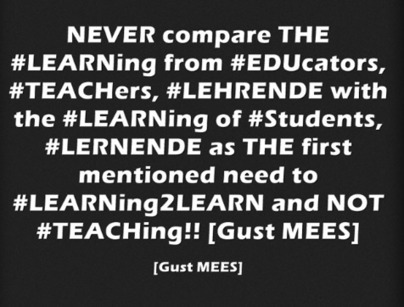





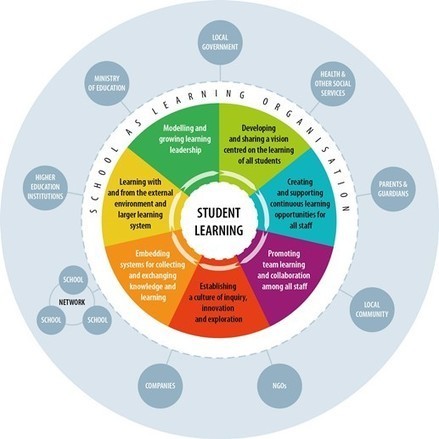










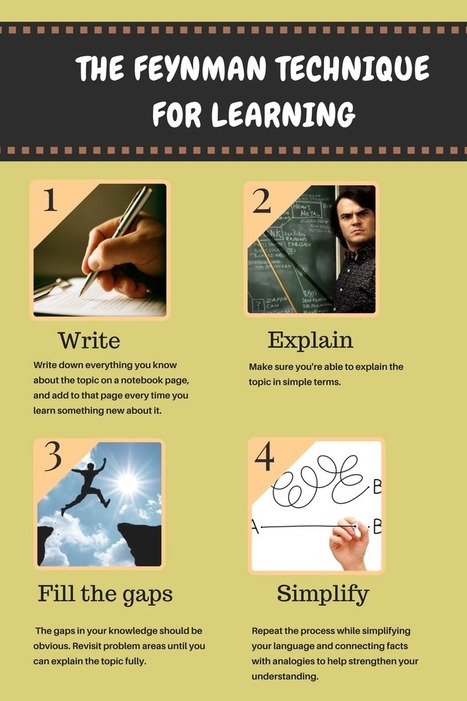


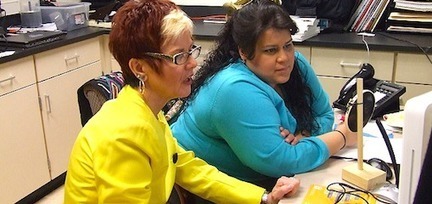
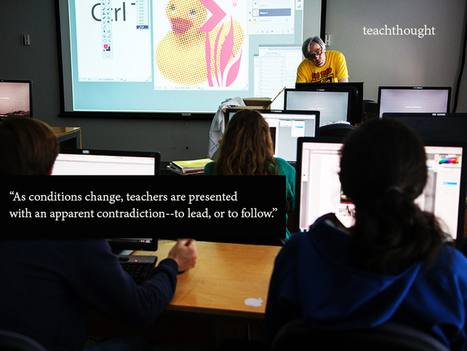

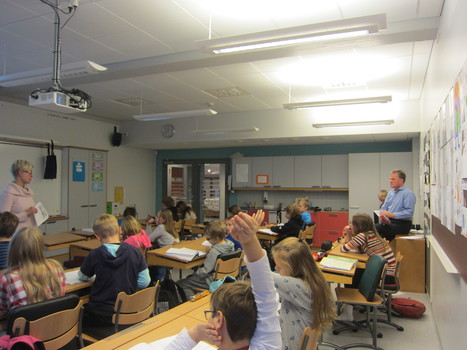



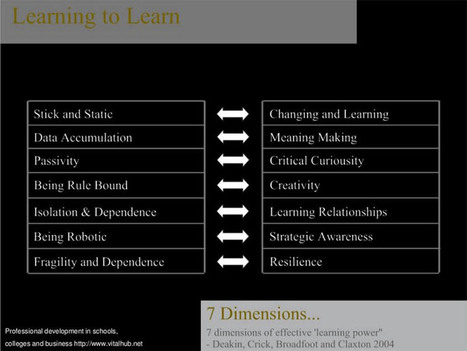
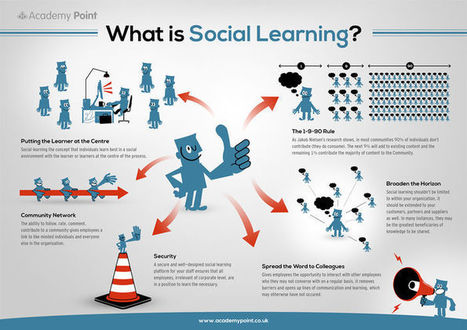



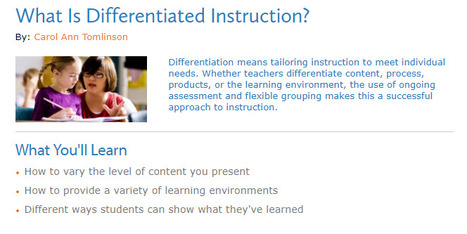
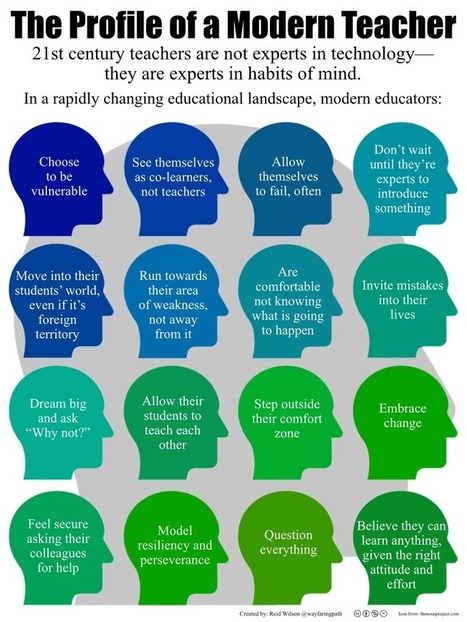


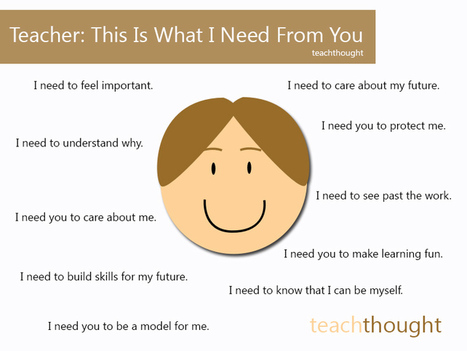
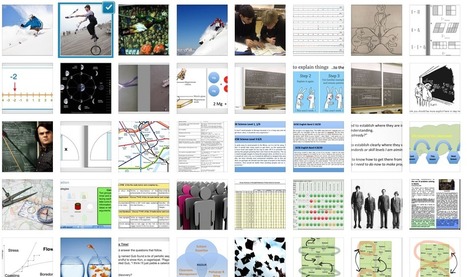







A new year, new challenges! As every new year there is a new challenge to perform for a BETTER Professional-Development for TEACHers, EDUcators, LEHRENDE, Instructors. Especially for Modern-EDU, Modern-Pedagogy, Modern-Learning there is still a lot to LEARN! Here below some thoughts in form of quotes from me. . .
Learn more / En savoir plus / Mehr erfahren:
https://www.scoop.it/t/21st-century-learning-and-teaching/?&tag=Grit
https://www.scoop.it/t/21st-century-learning-and-teaching/?&tag=Growth+Mindset
https://gustmees.wordpress.com/2015/05/13/andragogy-adult-teaching-how-to-teach-ict/
https://gustmees.wordpress.com/2017/08/25/adventures-of-learning-how-does-it-happen/
https://gustmees.wordpress.com/?s=life+long+learning